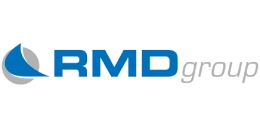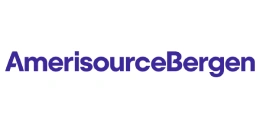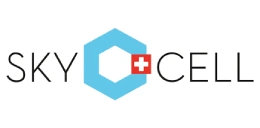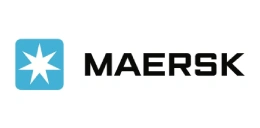Activated Carbon Cost Model: Carbon Economics Digest
_11zon.webp)
Activated carbon or activated charcoal is a very porous form of carbon with an incredibly large surface area, usually anywhere from 500 to 1,500 m²/g. Manufactured by activating carbon-rich materials such as coconut shells, wood, coal, or peat, it is subjected to physical or chemical treatment to create its distinctive pore structure. The microporous structure enables activated carbon to efficiently absorb gases, vapors, and dissolved materials, which makes it a vital adsorbent in all industries. The product has good adsorption capacity, good thermal stability, and chemical resistance, allowing it to be extensively applied in water treatment, air purification, gold extraction, food and beverage processing, and pharmaceuticals. Activated carbon is responsible for the removal of organic compounds, heavy metals, and odors and thus improving environmental quality and consumer safety. Its sustainability is upheld by the utilization of renewable raw materials, particularly coconut shells, and complying with the need to decrease the use of non-renewables globally. With growing need for clean water, tighter emissions regulations, and increasing uses in energy storage (supercapacitors), the future of activated carbon is strong, underpinned by ongoing research on functionalized and surface-modified grades. The global activated carbon market size reached USD 4.51 Billion in 2024. According to IMARC Group, the market is projected to reach USD 7.68 Billion by 2033, at a projected CAGR of 5.8% during 2025-2033. A number of long-standing drivers fuel the market for activated carbon. The primary driver is growing demand for drinking water treatment owing to rising global water shortage and tougher municipal water rules. A second demand driver is air cleaning, specifically in industrial emission reduction and car cabin filters, where activated carbon reduces volatile organic compounds (VOCs) and toxic gases. Third, the material finds a crucial role in the food and drink industry for decolorizing and purifying liquids including sugar, edible oils, and alcoholic drinks. Fourth, pharmaceutical and medical uses, such as drug development and poisoning cures, also drive demand. Emerging trends are the incorporation of activated carbon in renewable energy technologies such as hydrogen storage and supercapacitors and expanded applications in advanced filtration systems for the production of semiconductors and electronics. Competitive strengths are its potential for renewable sourcing and proven performance across key industries. Drawbacks are high production costs, particularly from high-grade feedstocks, as well as varying raw material availability. From a sustainability perspective, coconut-shell-based activated carbon is highly preferred due to its renewable origin and lower environmental footprint. Industry players are increasingly responding with investments in sustainable production methods, circular waste utilization, and R&D into low-emission activation technologies.
Trending Insights on Activated Carbon: Latest News and Developments
- In July 2025, Jacobi announced raising the price of all coconut shell-based activated carbons by further 15% to 20%. Due to an ongoing increase in the cost of raw materials, we are unfortunately forced to make this adjustment and change our price structure.
- In January 2025, the largest regulated water and wastewater utility company in the United States, American Water, and Calgon Carbon Corporation (Calgon Carbon), a wholly owned subsidiary of Kuraray Co., Ltd., jointly announce the signing of a nine-year exclusive supply contract that will provide granular activated carbon, equipment, and reactivation services to more than 50 American Water sites across 10 states. Through 2033, American Water customers nationwide will continue to benefit from Calgon Carbon's activated carbon products and services, which are used to remediate per- and polyfluoroalkyl substances (PFAS) in drinking water.
- In July 2024, Haycarb PLC, announced the opening of its state-of-the-art Electrochemical Laboratory, which is now called its Centre of Innovation (CoI). A major turning point in Haycarb's continuous dedication to innovation and quality in the realm of energy storage materials is this new facility.
Case Study on Cost Model of Activated Carbon Manufacturing Plant:
One of our clients reached out to us to conduct a feasibility study for setting up a medium scale activated carbon manufacturing plant. We developed a comprehensive financial model for the setup and operation of a proposed activated carbon manufacturing plant in India. This plant is designed to produce 6,000 tons of activated carbon annually.
Manufacturing Process: The production of activated carbon generally starts from carbonaceous sources like coconut shells, wood, peat, or coal. These are purified and dried to remove moisture and are then comminated to the desired particle sizes to facilitate efficient processing. The first step in carbonization is to heat the material in a limited oxygen atmosphere at 400–700°C, eliminating volatile matter and resulting in a high-carbon char. During the stage of activation, the char is subjected to physical activation with steam or carbon dioxide at 800–1,100°C or chemical activation with agents like phosphoric acid or zinc chloride at lower temperatures. The activation process creates an intricate porous structure and increases surface area. The material is cooled, washed (if chemically activated) to eliminate residual chemicals and ash, and dried. Quality control entails strict analysis of iodine number, BET surface area, pore volume distribution, ash content, and adsorption efficiency. The final milling or granulation to the desired particle size (powdered, granular, or extruded forms) is done. The product is then packaged in moisture-proof bags or drums and shipped for application in water treatment systems, air cleaners, gold recovery, pharmaceuticals, and food processing.
_11zon.webp)
Raw Material Required:
The production of activated carbon requires a carbon-rich precursor and chemicals for activation and finishing. Key raw materials include:
- Coconut Shells/Wood Charcoal
- Phosphoric Acid
- Zinc Chloride
Machineries Required:
- Crusher / Hammer Mill
- Conveyor / Feeder
- Dryer / Rotary Drum
- Magnetic Separator
- Rotary Kiln / Furnace
- Cyclone / Dust Collector
- Scrubber / Bag Filter
- Rotary Kiln / Shaft Furnace
- Cooler / Heat Recovery
- Boiler
- Impregnation Tank / Agitator
- Dryer / Oven
- Furnace / Kiln
- Washing / Neutralization Tanks
- Vibrating Screens
- Air Classifier
- Magnetic Separator
- Bagging Machine
- Jumbo Bag Filler
- Impregnation Tank
- Dryer / Oven
Techno-Commercial Parameter:
- Capital Investment (CapEx): Setting up an activated carbon production plant involves considerable investment on various fronts. The capital outlay involves the acquisition of appropriate land, civil works for the plant infrastructure, and the procurement of specialized equipment like carbonization kilns, rotary kilns, or multiple hearth furnaces for activation. The installation of steam generating units, chemical handling facilities, and pollution control apparatus is essential. Investment is also made in quality test laboratories, packaging facilities, and automation systems for process optimization. Safety infrastructure, i.e., gas monitoring and fire suppression systems, is necessary owing to high-temperature operations. IT infrastructure and administrative buildings form a part of the total CapEx. In general, the CapEx profile is characterized by the level of process sophistication (physical vs. chemical activation) and production capacity size.
- Operating Expenditure (OpEx): Operating expenses at an activated carbon plant are dominated by raw material purchases, with the most expensive feedstocks being coconut shells and coal, depending on local availability. Electricity and steam are the largest components of recurring expenses with the high-temperature activation process. Labor compensation, kiln and furnace maintenance, and effluent and chemical residue handling are other recurring expenses. Other costs include packaging, quality control testing, environmental regulations, insurance, and taxes. Transportation of raw coal or raw shells and delivery of final activated carbon to customers also makes a major contribution to the cost. Sound process optimization and waste heat recovery processes are widely used to minimize OpEx and maximize profitability.
- Profitability Analysis Year on Year Basis: We assisted our client in developing a detailed cost model, which projects steady growth, with revenue rising throughout the projected period. Moreover, gross profit margins lie between a range of 15-25%, and net profit lie between the range of 10-15% during the income projection years, highlighting strong financial viability and profitability.
Conclusion:
Our financial model for the activated carbon manufacturing plant was meticulously developed to meet the client’s objectives, providing an in-depth analysis of production costs, including raw materials, manufacturing, capital expenditure, and operational expenses. By addressing the specific requirements of producing 6,000 tons of activated carbon annually, we successfully identified key cost drivers and projected profitability, considering market trends, inflation, and potential fluctuations in raw material prices. This comprehensive financial model equipped the client with valuable insights into strategic decision-making, demonstrating our commitment to delivering high-quality, client-focused solutions that ensure the long-term success of large-scale manufacturing ventures.
IMARC's Financial Model Expertise: Helping Our Clients Explore Industry Economics
IMARC is a global market research company that offers a wide range of services, including market entry and expansion, market entry and opportunity assessment, competitive intelligence and benchmarking, procurement research, pricing and cost research, regulatory approvals and licensing, factory setup, factory auditing, company incorporation, incubation services, recruitment services, and marketing and sales.
Under our factory setup services, we assist our clients in exploring the feasibility of their plants by providing comprehensive financial modeling. Additionally, we offer end-to-end consultation for setting up a plant in India or abroad. Our financial modeling includes an analysis of capital expenditure (CapEx) required to establish the manufacturing facility, covering costs such as land acquisition, building infrastructure, purchasing high-tech production equipment, and installation. Furthermore, the layout and design of the factory significantly influence operational efficiency, energy consumption, and labor productivity, all of which impact long-term operational expenditure (OpEx). So, every parameter is covered in the analysis.
At IMARC, we leverage our comprehensive market research expertise to support companies in every aspect of their business journey, from market entry and expansion to operational efficiency and innovation. By integrating our factory setup services with our deep knowledge of industry dynamics, we empower our clients to not only establish manufacturing facilities but also strategically position themselves in highly competitive markets. Our financial modeling and end-to-end consultation services ensure that clients can explore the feasibility of their plant setups while also gaining insights into competitors' strategies, technological advancements, and regulatory landscapes. This holistic approach enables our clients to make informed decisions, optimize their operations, and align with sustainable practices, ultimately driving long-term success and growth.
Our Clients
Contact Us
Have a question or need assistance?
Please complete the form with your inquiry or reach out to us at
Phone Number
+91-120-433-0800+1-201-971-6302
+44-753-714-6104










